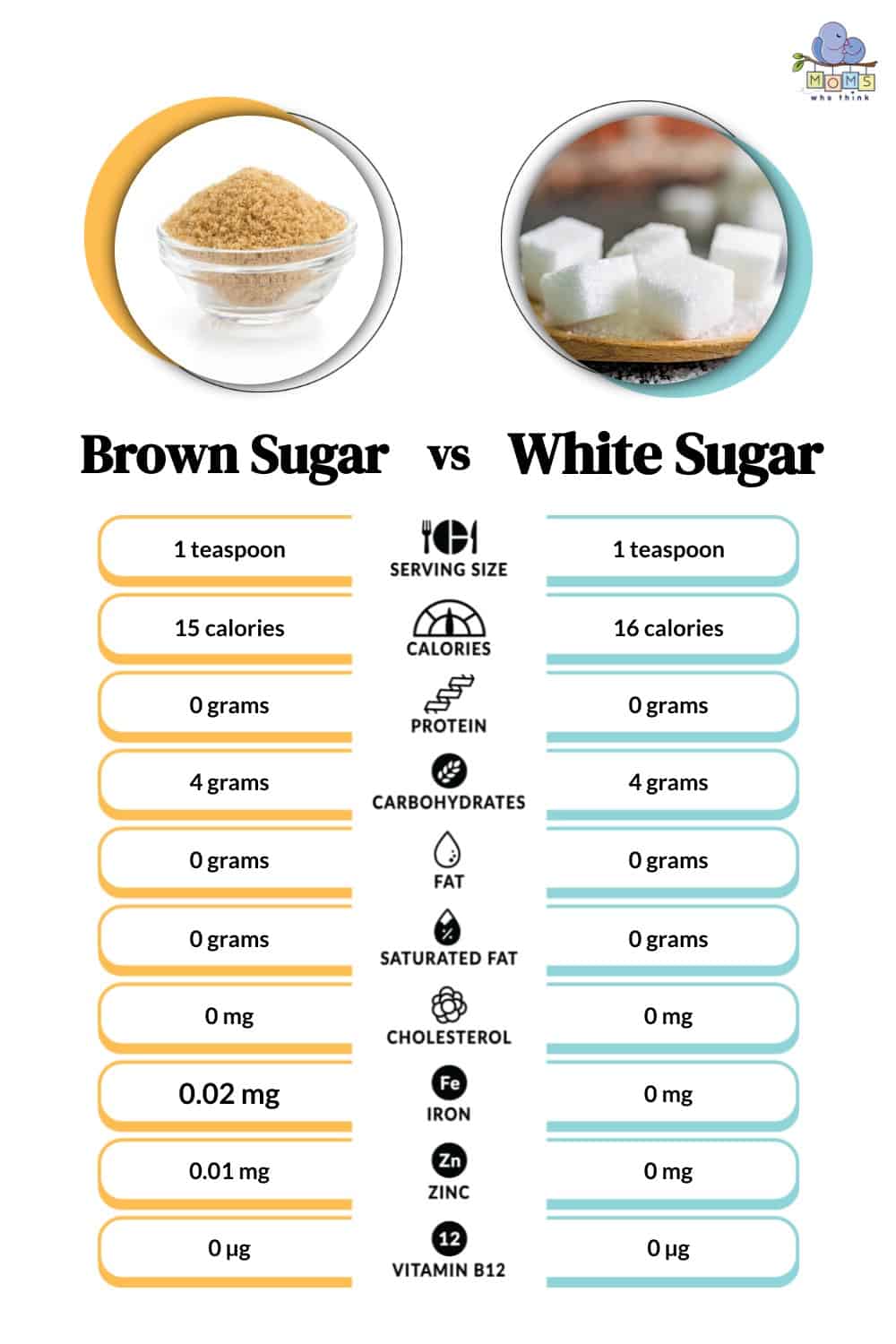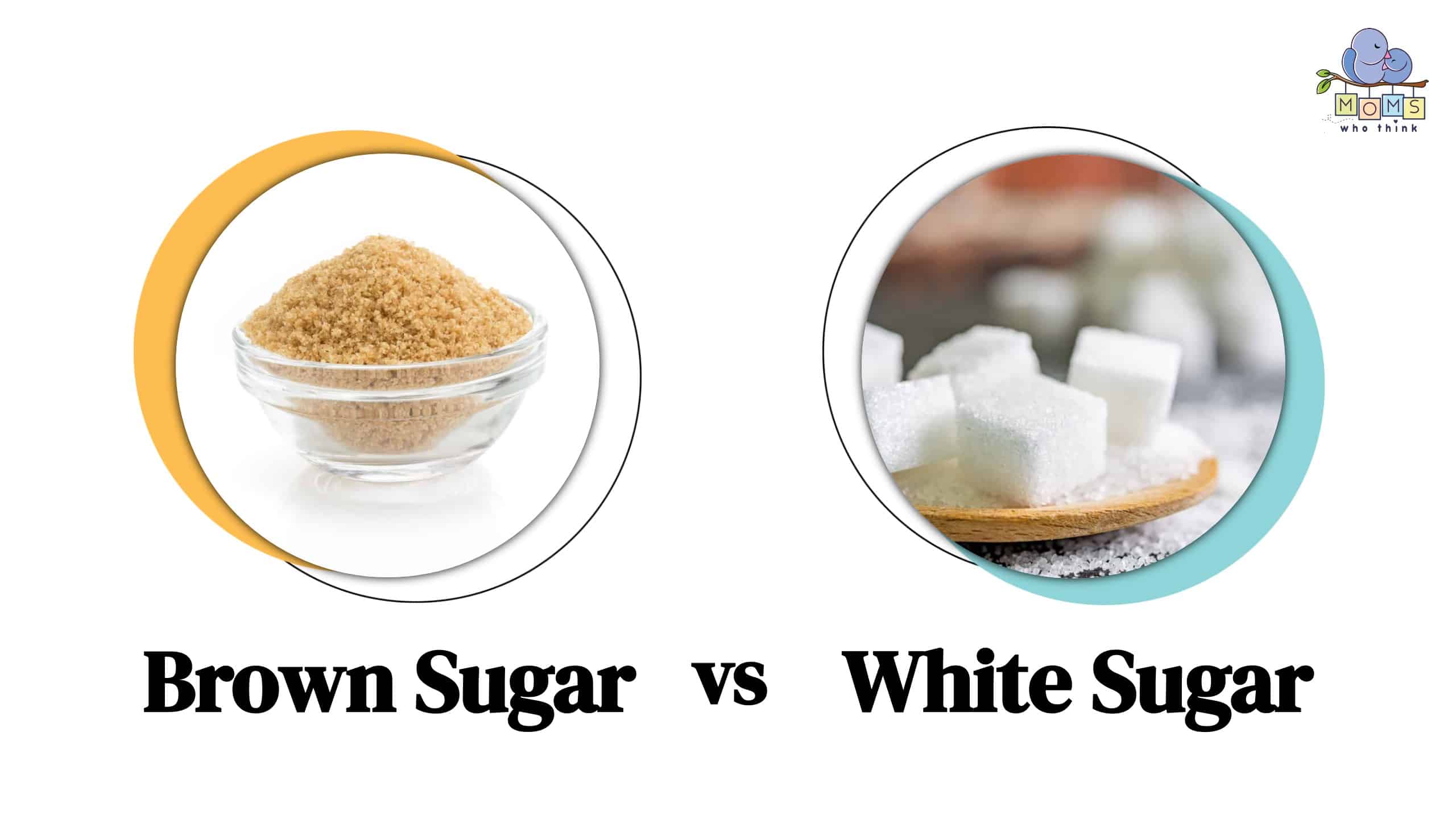When you’re baking many of your favorite dishes, you often have a choice between white and brown sugar, but how are they different? The primary difference between brown sugar vs. white sugar is that brown sugar contains molasses while white sugar does not. Plus, white sugar is much sweeter, while brown sugar provides a more caramel or toffee-like flavor. There are other differences to keep in mind when preparing your next treat, so let’s explore them.
The best way to learn the differences between brown sugar vs. white sugar is to define both.
What is White Sugar?
White sugar is made when you extract sugar juice from sugar cane plants or sugar beets. Next, the juice is purified, filtered, and then crystallized into raw golden sugar. Then, it’s purified into its final form. It’s typically purified by running it through a natural carbon filtration system. Sugar is really a chemically pure sucrose, and it’s a natural carbohydrate. The biggest takeaway to consider here is that white sugar is produced by removing the molasses.
There are several forms of white sugar, including:
- Granulated Sugar – This is your typical table sugar that’s often used in baking. Granulated sugar is made by extracting the molasses.
- Caster Sugar – This sugar is made up of superfine crystals, and it can also be used as a syrup in drinks. You can make it at home with a food processor by pulsating granulated sugar.
- Powdered Sugar – It’s a byproduct of grounded and sifted sugar that’s typically a finishing element, and it’s great for making frosting.
- Sugar Cubes – These cubes of plain white sugar are typically used to sweeten hot drinks.
What is Brown Sugar?
The differences between brown sugar vs. white sugar starts to come in when you see how brown sugar is produced. This sugar has the brown color because of the molasses that is added back in to provide the unique color and additional moisture. The molasses used in brown sugar only comes from sugar cane and not sugar beets. That's not necessarily what makes the brown sugar healthier (more on that later). The molasses is either added by adding it to the boiling sugar crystals, or it can be made by coating white sugar.
Like white sugar, there are also several types of brown sugar, including:
- Muscovado Sugar – Contains coarse crystals that have natural molasses that’s great for dishes that require a deeper molasses flavor.
- Light Brown Sugar – Typical brown sugar that adds texture and caramel to baked goods.
- Dark Brown Sugar – It contains more molasses than the light sugar, which makes it great for gingerbread. The food you make will have a deeper flavor and appear darker.
- Turbinado Sugar – It’s a type of raw sugar cane that has a light brown color and mild flavor that is great in dishes that require a bit of crunch.
- Demerara Sugar – It’s like turbinado sugar and has an amber color and large grains. It’s also good on sweet and crispy baked goods.
4 Differences

There are some major and subtle differences between brown sugar and white sugar.
1. Molasses
For white sugar, the molasses is extracted. For brown sugar, the molasses is retained, which is what gives it the richer texture, darker color, and caramel flavor.
2. Uses
While they can sometimes be interchangeable, brown and white sugar are typically used in different applications. Dark brown sugar is often used in recipes that have a richer flavor profile, like BBQ sauce, gingerbread, and spice cakes. Light brown sugar is used in sweet recipes, like rubs and marinades. White sugar is used in most other baked goods.
3. Taste
They taste a bit different as well. Brown sugar has a deeper, toffee or caramel-like flavor because of the included molasses. White sugar is sweeter so you can use more or less to get your desired flavor.
4. Nutritional Comparison
While they are quite similar, there are some differences when it comes to nutrition. When comparing one teaspoon of each, they contain about the same number of calories and carbohydrates and have no fat or cholesterol. Brown sugar does contain iron and zinc, and white sugar does not. Iron is essential for creating red blood cells, and zinc aids in a stronger immune system, so they have their benefits.
With all this in mind, it’s important to watch your intake of sugar. It’s an ingredient that’s been linked to obesity, and it’s a factor for heart disease and type 2 diabetes. While you can enjoy treats, be cautious and make sugar less than 5-10% of your daily calories.
Conclusion
While they are fairly simple components, there are some differences in the battle of brown sugar vs. white sugar, especially when it comes to the inclusion or exclusion of molasses. As a final point, it’s worth pointing out that either product will only last if it’s stored properly. If it’s exposed to moisture or high humidity, then it can clump together. So, store it in an airtight container in a cool and dry place. With that in mind, try both in your next dessert, and you won’t be disappointed.

